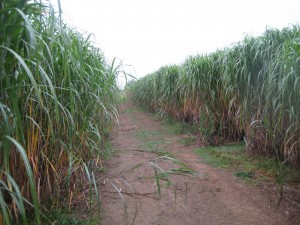Gamekeepers – Have you considered Miscanthus as a game cover crop?
 If you run a shoot on your land you should consider miscanthus as a game cover crop. Unlike many other cover crops miscanthus is perennial so when it is harvested each year (usually in March-April) it grows back whatever the weather. This is a key advantage as the successful establishment of alternatives (e.g. maize, sorghum, triticale and kale) is highly weather dependent and these annual crops could fail completely in a bad year.
If you run a shoot on your land you should consider miscanthus as a game cover crop. Unlike many other cover crops miscanthus is perennial so when it is harvested each year (usually in March-April) it grows back whatever the weather. This is a key advantage as the successful establishment of alternatives (e.g. maize, sorghum, triticale and kale) is highly weather dependent and these annual crops could fail completely in a bad year.
Miscanthus grows to 3 metres in height and takes about 4 years to become fully mature. In addition to its perennial nature it has some other key benefits:
- It can be planted on a wider range of land compared to some cover crops.
- When harvested the crop can be used as a biofuel or as animal bedding providing additional income.
- Once established the management costs are low. The main cost is harvesting. Otherwise, the leaf litter produced suppresses the weeds so there is no need to spray.
- As the crop is thick it provides excellent shelter for birds and the gaps between plants provide a suitable place for foraging.
- The crop has a wind breaking characteristic which reduces damage to other cover crops.
- The leaf litter provides a clean, dry surface which the birds like and makes walking through the crop easier for beaters especially when planted on heavy soils.
If all this sounds good then please contact us to chat through your project and get a formal quote for rhizomes and planter hire. You can get an idea of the prices for both here.
A couple of things to note:
- When you plant miscanthus for game cover it needs to be far less thick than when grown as an energy crop. 5-10 metre wide strips work well.
- Good results are achieved when miscanthus is planted adjacent to feeding game cover such as maize, triticale, kale and quinoa. This provides cover, feed and variety and enables good steady flushing.